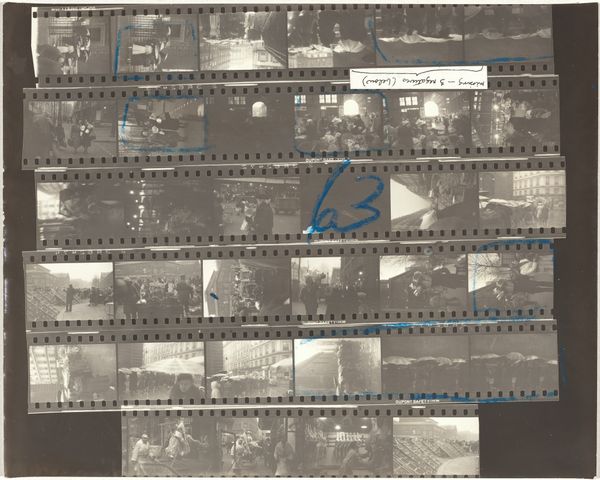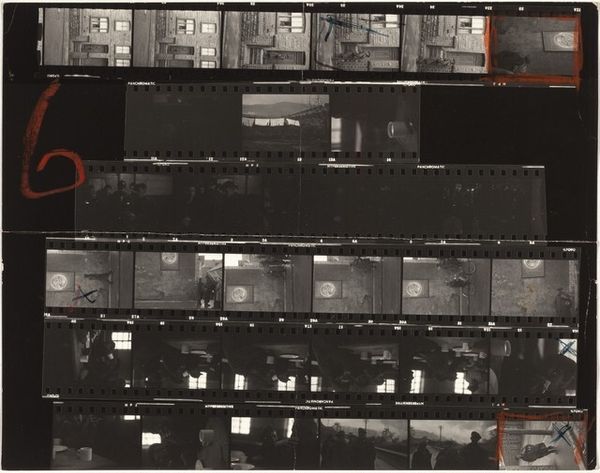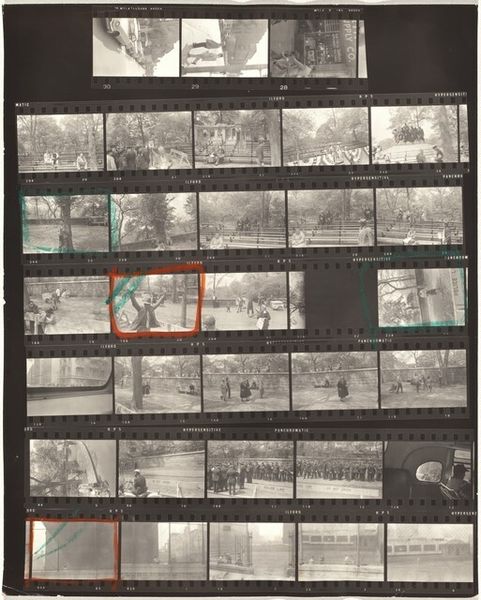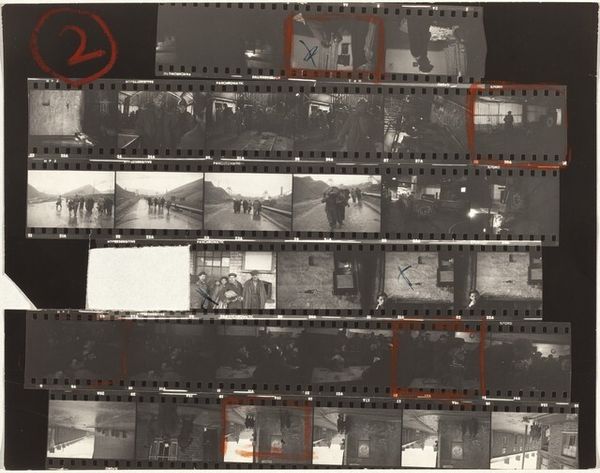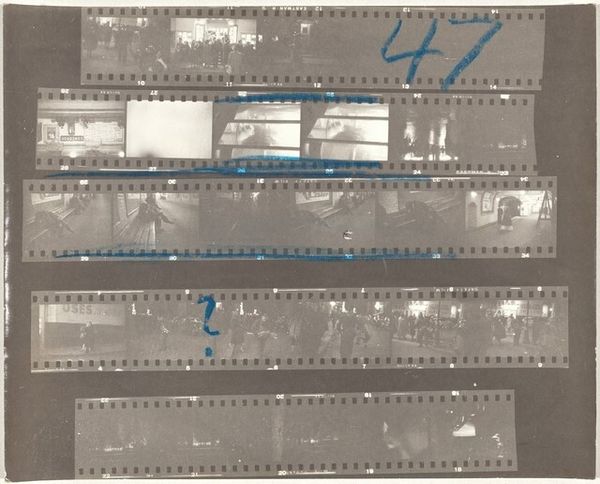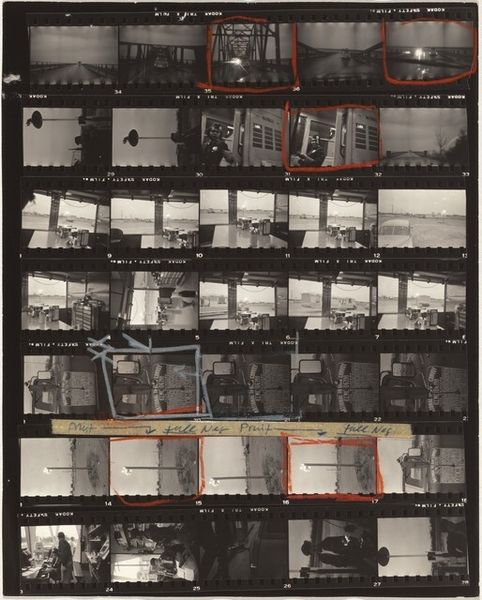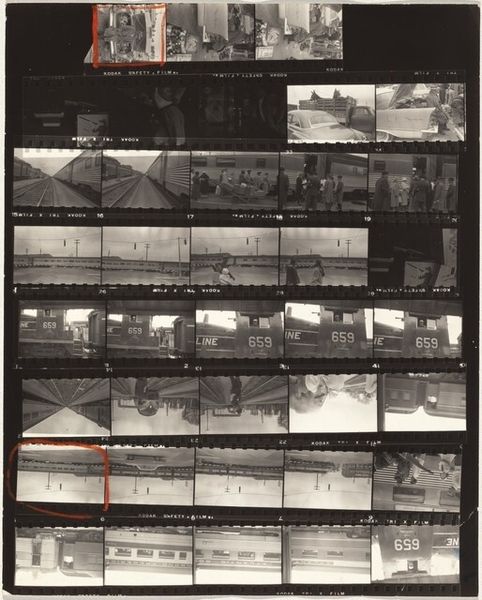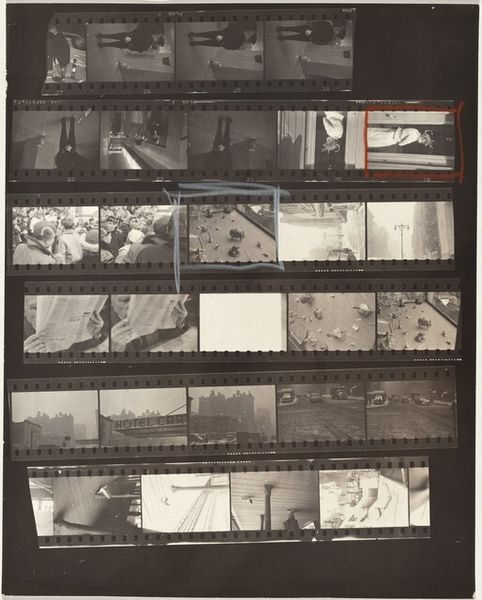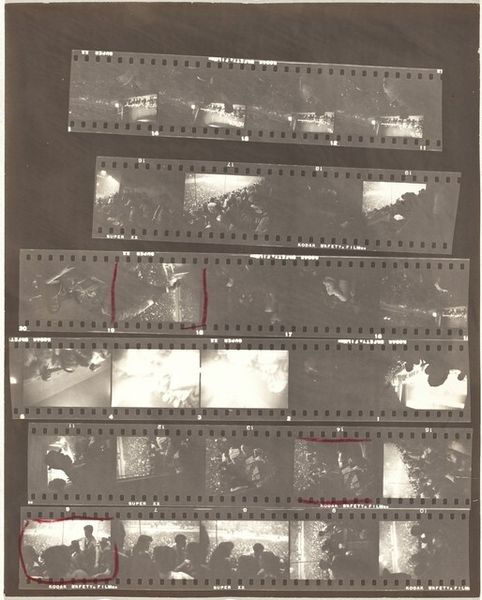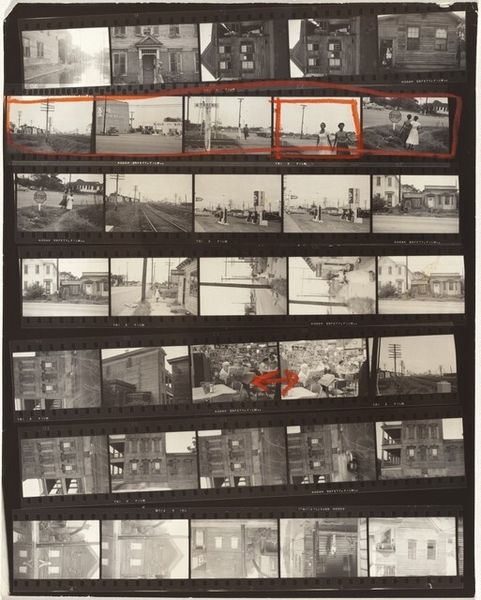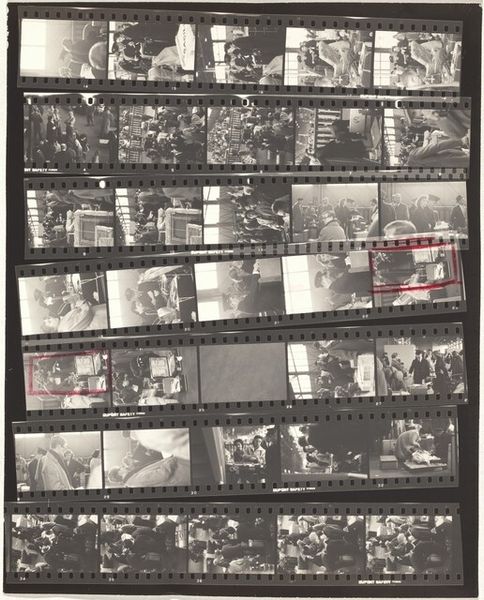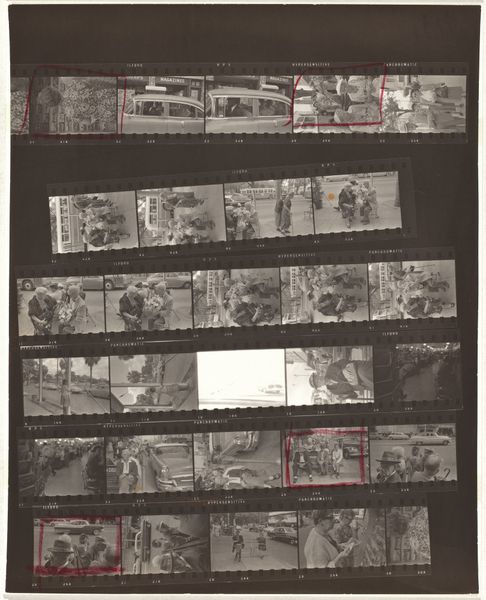
print, photography, gelatin-silver-print
#
portrait
#
film photography
# print
#
landscape
#
street-photography
#
photography
#
historical photography
#
gelatin-silver-print
Dimensions: overall: 25.3 x 20.2 cm (9 15/16 x 7 15/16 in.)
Copyright: National Gallery of Art: CC0 1.0
Curator: Here we have Robert Frank's "Children and family 10" from 1951, a gelatin-silver print. My immediate impression is of organized chaos. There's a grid, but each frame feels like a glimpse into something disordered, unfiltered. Editor: It evokes a feeling of post-war uncertainty, a world trying to piece itself back together. Looking at these fragments of daily life, mostly shot from unusual angles and focal lengths, one can understand the trauma and stress that war inflicts on families, the world is not stable. Curator: Observe how Frank employs stark contrast, creating a deep tonal range that emphasizes texture and form. It directs our eye immediately to light versus dark in almost every single image and makes this layout of photos stand out formally from typical grids of documentary film strips. What is it that Frank seeks by framing domesticity this way? Editor: By arranging the negatives in this way, Frank seems to be questioning the traditional representation of family and childhood, as though the traditional happy ending doesn’t exist. These glimpses are real and true in some way because they’re outtakes and snippets, as opposed to perfectly constructed photographs. Each photograph captures an incomplete picture, just fragments of everyday life that hint at themes of fragility and displacement that have plagued societies, particularly after periods of conflict like the second world war. Curator: Indeed. If you zoom in and focus on certain strips and individual photos, you can trace specific geometric patterns across the montage—shapes created by shadows and linear perspective. There are striking parallels even among photographs of totally different subjects. The recurring visual rhyme in a variety of subjects suggests that the content may matter less than the underlying forms, in terms of the total effect. Editor: Looking at the social context, we need to remember Frank's own experiences as a Jewish refugee fleeing Nazi Germany, because these personal events of forced emigration affected his art practice as well as its emotional value. One should view his documentation through such trauma as an emotional document, one that seeks to deconstruct the ideal, in this case a normal post-war family existence. Curator: Interesting. It leaves me pondering how structure and fragmentation can intersect to redefine our understanding of photographic images. Editor: And for me, it highlights the essential human condition. Thank you for sharing your interpretations.
Comments
No comments
Be the first to comment and join the conversation on the ultimate creative platform.
